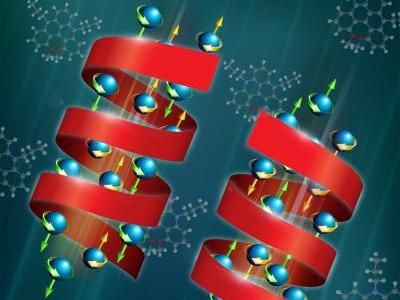Remote-control closed system invented for inserting radio-active atoms inside fullerenes
The new material will increase control of radiation therapy
Virginia Tech chemistry Professor Harry C. Dorn, Emory and Henry College chemistry Professor James Duchamp, and Panos Fatouros, professor and chair of the Division of radiation Physics and biology at the Virginia Commonwealth University School of medicine have co-invented a hands-off process for filling fullerenes with radio-active material.
Fullerenes are hollow carbon molecules. Dorn has created new materials by filling them with atoms of various metals. An important example is a fullerene that encases a sensitive contrast agent (gadolinium) for MRI applications, including as a diagnostic and therapeutic agent for brain tumors. Dorn and Fatouros at VCU have funding from the National Institutes of Health's National Cancer Institute (NCI) to further develop, produce, and test fullerene nanoparticles that can identify brain tumor cells and selectively target them for radiation therapy.
What if the radioactive material could also be encased in a carbon cage? Dorn asked himself several years ago. With more funding from NCI and Virginia's Commonwealth Technology Research Fund (CTRF), he set out to do it.
Now Dorn and Duchamp have invented a generator that makes the new material by remote control. "The new materials come out the bottom like a beer product," Dorn said. The golden liquid is not dispensed into an open cup, of course.
Basically, rods about three times the size of a pencil lead that are made up of graphite and lutetium (Lu) are inserted into big jar through a tube on one side and moved slowly toward a source of electricity on the other side. The jolted rod burns dramatically and the inside of the jar is coated with ash. A nozzle kind of like a miniature carwash wand is lowered from the top to rinse the soot to the bottom and out through a filter. The soot is trapped and the resulting beer-colored solution contains Lu atoms bound to nitrogen inside of fullerenes. This radiolabeled nanomaterial is then further purified by passage through a column that traps the empty-cage fullerenes. The resulting liquid is evaporated and hydroxyl atoms are attached to the molecules so they will be soluble in biofluids.
All of the steps of the process are managed remotely and the purified product is decanted into a shielded container.
Dorn and Duchamp have used non-radioactive Lu to produce the trimetallic nitride endohedral metallofullerenes (Lu3N@C80) – in other words, three atoms of Lu attached to a nitrogen atom inside an 80-atom carbon molecule cage. Once the apparatus is at VCU, Fatouros will use isotope 177Lu, which is used to treat cancer. Although other details need to be worked out, Dorn is confident the generator will work just as well with the radiolabeled product and will produce (177Lu3N@C80).
It all takes less than a day, which is important because 177Lu has a half life of six and one-half days. "So we can't take 30 days to make the product," said Duchamp.
It will be the first time that 177Lu has been encapsulated in a fullerene and the first time any radioactive metal has been encapsulated under remote control with direct purification to a pure product.
"The advantage of the metal cage is we can control where it goes biologically," Dorn said.
"We believe it will mean fewer side effects with better targeted localization, but that remains to be tested," said Fatouros.
"Another advantage is we can deliver other materials inside the fullerene with the 177Lu – such as a targeting agent (interleukin-13) and an MRI contrast agent," said Dorn.
Creation of such a multi-modality material for use on brain tumors is a specific goal of Fatouros and Dorn's NCI-funded research project, "Metallofullerene imaging and targeting of glioma." "The MRI agent lets you see where you are going and the 177Lu lets you treat an exact region," said Dorn. "The imaging ability also lets you see if the tumor is shrinking or getting larger."
An earlier stage of the research was presented at the NCI Alliance for Nanotechnology in Cancer Investigators Meeting in September 2008 and a patent application has been filed.
Dorn points out that the new device will also allow the production of other kinds of radio-labeled fullerenes that can be used for environmental studies, such as to track fullerene nanomaterials.
Topics
Organizations
Other news from the department science
These products might interest you

NANOPHOX CS by Sympatec
Particle size analysis in the nano range: Analyzing high concentrations with ease
Reliable results without time-consuming sample preparation

Eclipse by Wyatt Technology
FFF-MALS system for separation and characterization of macromolecules and nanoparticles
The latest and most innovative FFF system designed for highest usability, robustness and data quality

DynaPro Plate Reader III by Wyatt Technology
Screening of biopharmaceuticals and proteins with high-throughput dynamic light scattering (DLS)
Efficiently characterize your sample quality and stability from lead discovery to quality control

Get the chemical industry in your inbox
By submitting this form you agree that LUMITOS AG will send you the newsletter(s) selected above by email. Your data will not be passed on to third parties. Your data will be stored and processed in accordance with our data protection regulations. LUMITOS may contact you by email for the purpose of advertising or market and opinion surveys. You can revoke your consent at any time without giving reasons to LUMITOS AG, Ernst-Augustin-Str. 2, 12489 Berlin, Germany or by e-mail at revoke@lumitos.com with effect for the future. In addition, each email contains a link to unsubscribe from the corresponding newsletter.
Most read news
More news from our other portals
Last viewed contents





























































